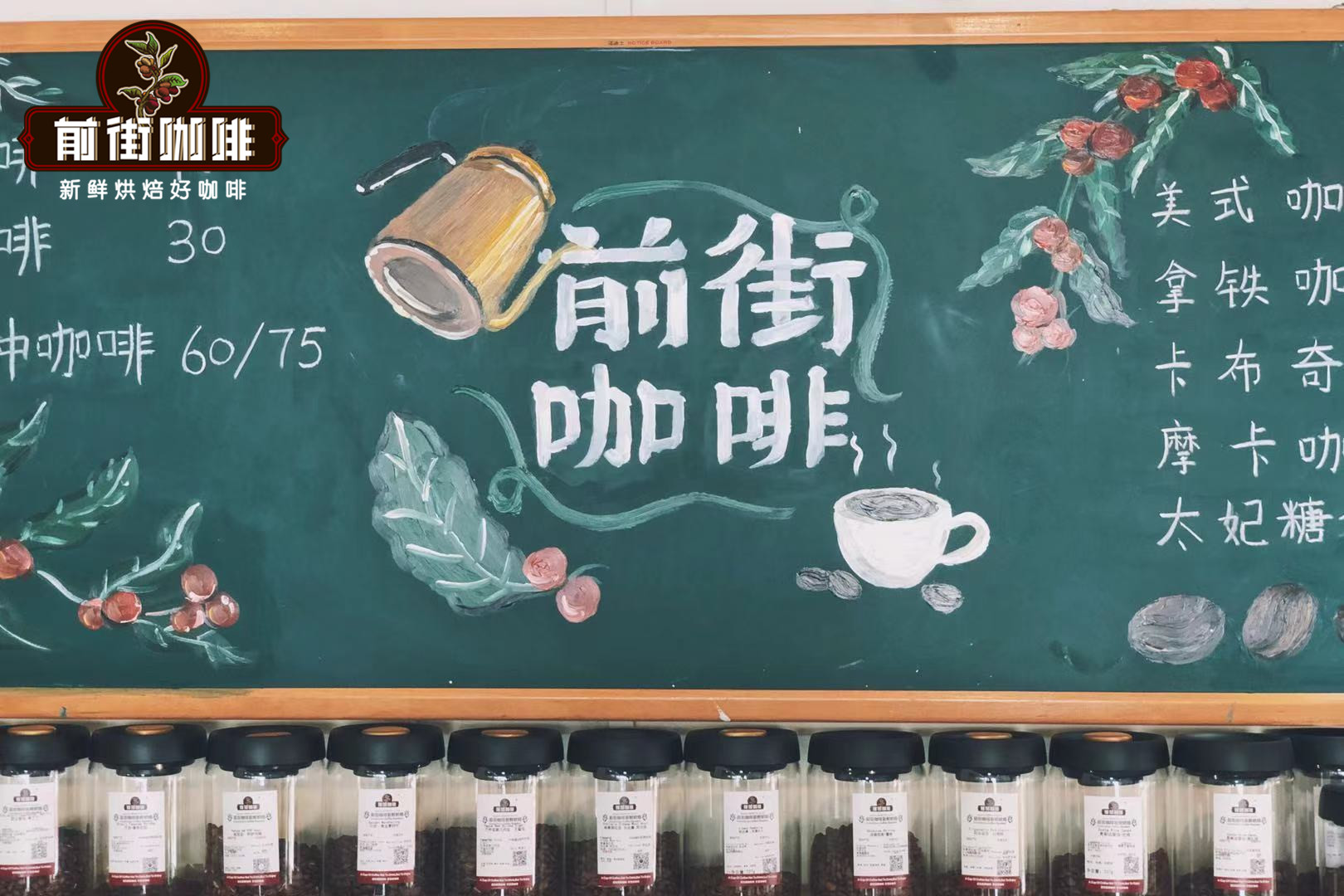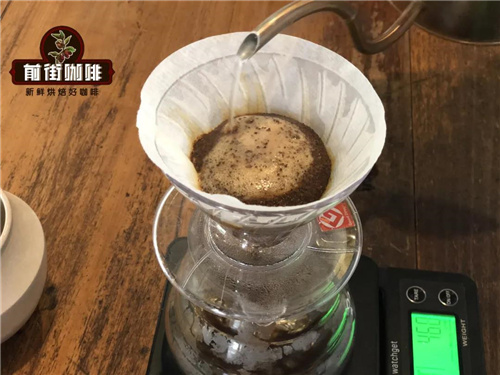Bolivian Coffee Manor introduces the flavor characteristics and treatment of Bolivian coffee beans

Professional coffee knowledge exchange more coffee bean information please follow the coffee workshop (Wechat official account cafe_style)
Qianjie bought coffee beans from many countries, such as Brazil, Colombia, Indonesia and other coffee countries, there are many very representative coffee beans, but today Qianjie would like to share with you a relatively minority country coffee beans-Bolivian coffee beans.
Bolivian coffee beans are rarely seen in China, because it is related to the low production of Bolivian coffee, because the production scale of Bolivian coffee is relatively small, and it is naturally incomparable with large coffee exporters such as Brazil and Vietnam, because Bolivian coffee is basically produced by small farmers, while Bolivian coffee is mainly sold domestically.

However, a Bolivian Java coffee on the front street is from Waliki Manor. Waliki Manor is very small, with an area of only six hectares, mainly located in Karanawi, the main coffee producing area of Bolivia, with a relatively high altitude of more than 1660 meters, and the climate in the area is cold, so the coffee planting cycle is relatively long. The extension of coffee planting cycle, on the one hand, is also very conducive to the accumulation of coffee substances, coffee fruit sugar content will slowly increase over time, brewed coffee will be more sweet.
In addition to sweetness, coffee produced at high altitudes in Bolivia also has a soft citrus acidity and berry flavor. The coffee flavor produced at relatively low altitude shows a balanced taste, chocolate sweetness and soft sour taste.
After buying this Bolivian coffee bean on the front street, in order to highlight its unique flavor, it uses light roasting. Coffee guests on the front street often ask what's the difference between light-roasted and deep-roasted coffee beans. There is still a big difference in the flavor of coffee beans roasted in different degrees. Generally speaking, lightly roasted coffee beans will have more acidity, while medium or deep roasted coffee beans will have a deeper bitter taste. However, the flavor of coffee is not compared by the degree of roasting. For example, the treatment of coffee beans will also affect the flavor of coffee beans. For example, the taste of washed beans will be cleaner, and the aroma and sweetness of sun-treated coffee beans will be more obvious. Like Qianjie coffee, Xiaobai who has just started drinking coffee is more recommended. You can first try washing coffee beans, sun-treated coffee beans, and then slowly mix with manor beans.

Of course, in addition to the altitude and terrain, the flavor of coffee is also closely related to the variety of coffee. Because this is the gene of the coffee tree, the general flavor of the coffee bean has been largely determined by the moment the coffee tree is planted. Most of the coffee varieties grown in Bolivia are iron cards, and there are also a small number of Kaddura varieties, but the most special coffee variety is the Java variety, which is the Bolivian coffee bean on the street. If you often look at the Qianjie official account, Qianjie Coffee has previously introduced a coffee bean from West Java, Indonesia, but this Indonesian coffee bean is different from the Bolivian Java coffee bean, so don't get confused.
The Indonesian coffee beans introduced before in Qianjie Coffee come from Edini Manor. It uses honey treatment to deal with coffee beans. Its sweetness is obvious, and its flavor is a bit like mango, red wine and jackfruit. Because its flavor is a bit like a traditional Indonesian snack, it is named after this Emani snack.
And the variety is not the Javanese variety of Bolivian coffee, because the Indonesian coffee tree is planted on the Indonesian island of West Java, and its variety is Smur795. Another point is that the Java varieties of Bolivian coffee beans on the street shelves are not grown on the Indonesian island of West Java, so don't confuse the two coffee beans because of their names.

As far as Qianjie knows, JAVA is actually a coffee variety from Ethiopia, known locally in Bolivia as long beans, because of its long shape, so its official name is Java (Java). Do not underestimate the Java variety, Java has a strong resistance to leaf rust, suitable for small farmers, its flavor is also very outstanding, as good as rose summer.
The economic level of Bolivia is still very backward, compared with Ethiopia, Ethiopia is in better economic conditions, so the economic conditions of Bolivia can not be compared with Brazil, Colombia and other coffee countries. This leads to a transportation problem for Bolivian coffee beans. The main coffee producing area in Bolivia is Yonggas, where the infrastructure is very backward and there is a lack of large washing plants. In addition, the traffic in Yonggas is very inconvenient, which is known as the "road of death". In this way, the road can easily lead to the fermentation and decay of coffee fruit in transit, resulting in a choking smell. Qianjie believes that this situation is very bad for Bolivia's coffee exits.
Bolivian farmers mainly use water washing to treat raw beans, putting the selected coffee cherries into a peeling machine to initially remove their peel and pulp; putting raw coffee beans with residual pectin into water and letting them ferment for about 24 hours; after fermentation, wash the raw coffee beans with parchment in a flow tank to remove their pulp and pectin. After washing, dry the coffee beans or dry the coffee beans with the help of a dryer to reduce the moisture content to about 12%. Finally, remove the parchment of raw coffee beans and store them in the warehouse.
But other producing areas in Bolivia occasionally use sun treatment. Qianjie believes that these areas that use sun treatment may be in view of the cold climate in Bolivia, so many farmers use machine drying instead of sun drying, which is called cocoa solarization. Qianjie believes that many people have never heard of cocoa dryers for processing coffee beans, which was first used by Pedro of the Rodriguez family to use this latest technology to use cocoa dryers to slowly and continuously dry coffee beans at low temperatures. this can reduce the impact of the weather.
The process of cocoa sun treatment is generally as follows: picking the most mature coffee fruit during the best maturity. After selection and weighing, the coffee fruit is washed carefully, dried on an African drying bed, and then turned every hour. A week later, put the coffee fruit in the cocoa dryer. Then put the processed raw coffee beans into the warehouse for storage.

The front street cup tested the sun-treated Bolivian coffee beans, and the front street baristas used the 200ml standard cup to test the bowl, with a grinding degree of 70%, 75%, 11.3g, and a water temperature of 94 degrees Celsius. First, grind and smell the dried incense. The dry aroma of sun-treated Bolivian coffee beans gives off the aroma of hazelnut, then fill the bowl with water to confirm the wet flavor. After 4 minutes, the residue was broken and the flavor was identified. Wet aromas with fermented aromas of ripe fruit. Qianjie cup tests that the overall flavor of this Bolivian coffee bean is the sweetness of cream and hazelnut in the mouth, followed by more sweet and sour notes of citrus and tropical fruit, and a little fermented wine after cooling.
After that, the front street uses hand flushing to confirm the flavor of this Bolivian coffee, because hand flushing is a relatively simple and perfect way to show the flavor of the producing area. Qianjie Coffee uses a V60 filter cup to brew this coffee bean. V60 tapered filter cup has a relatively large hole, coupled with its unique spiral curve ribs, so that the air can be discharged more easily so as to improve the extraction quality. The taste may not be thick enough, but its high concentration of sweet and sour and obvious aroma is a major feature of it. The cooking parameters of Qianjie are: water temperature: 90-91 degrees, grinding degree: BG#6m (size of fine granulated sugar), ratio of powder to water: 1:15, powder quantity: 15g.

Qianjie hand flushing technique adopts the simplest three-stage style in Qianjie. In the first stage, the powder layer is fully moistened in the shape of "hamburger" for 30s, then the second stage is boiled, and the second stage is injected into 125g at the timer 54s. Then stop and wait for the water level to drop to 2 / 3 of the powder layer and inject into the third stage (this stage is to extract the sweet and sour flavor substances from the coffee powder) In the third stage, the water is injected to 225g at the timer 1: 39: 40, and the total extraction time is 2: 39: 10. Shake the coffee gently after the extraction, and then taste it after the coffee liquid is fully uniform.
Bolivian coffee brewing flavor: slightly fermented, grape, light nut, floral, medium acidity, fruit juice taste.
For more boutique coffee beans, please add private Qianjie coffee on Wechat. WeChat account: kaixinguoguo0925
Important Notice :
前街咖啡 FrontStreet Coffee has moved to new addredd:
FrontStreet Coffee Address: 315,Donghua East Road,GuangZhou
Tel:020 38364473
- Prev

Blue Mountain Coffee Manor how many varieties of coffee are there in Jamaica
As Japan has always invested in the Jamaican coffee industry, Blue Mountain Coffee is mostly owned by the Japanese, and they have also obtained the right of preemption of Blue Mountain Coffee. In 1992, Jamaica sold 688 tons of Blue Mountain coffee to Japan, 75 tons to the United States and 59 tons to Britain. 90% of Blue Mountain coffee is bought by the Japanese. Since the rest of the world can only get 10% of Blue Mountain, regardless of the price
- Next

Introduction to the taste of coffee beans
Origin: Hawaii is perfect in appearance, full-bodied, full-bodied, well-balanced acidity and cinnamon. Perhaps the most beautiful coffee bean in the world. Kona coffee beans from Hawaii have the perfect appearance, and their fruit is extremely full and shiny. The taste of coffee is rich and aromatic, with cinnamon flavor, and the acidity is well balanced. Brazilian coffee bean producing area:
Related
- Does Rose Summer choose Blue, Green or Red? Detailed explanation of Rose Summer Coffee plots and Classification in Panamanian Jade Manor
- What is the difference between the origin, producing area, processing plant, cooperative and manor of coffee beans?
- How fine does the espresso powder fit? how to grind the espresso?
- Sca coffee roasting degree color card coffee roasting degree 8 roasting color values what do you mean?
- The practice of lattes: how to make lattes at home
- Introduction to Indonesian Fine Coffee beans-- Java Coffee producing area of Indonesian Arabica Coffee
- How much will the flavor of light and medium roasted rose summer be expressed? What baking level is rose summer suitable for?
- Introduction to the characteristics of washing, sun-drying or wet-planing coffee commonly used in Mantenin, Indonesia
- Price characteristics of Arabica Coffee Bean Starbucks introduction to Manning Coffee Bean Taste producing area Variety Manor
- What is the authentic Yega flavor? What are the flavor characteristics of the really excellent Yejasuffi coffee beans?

